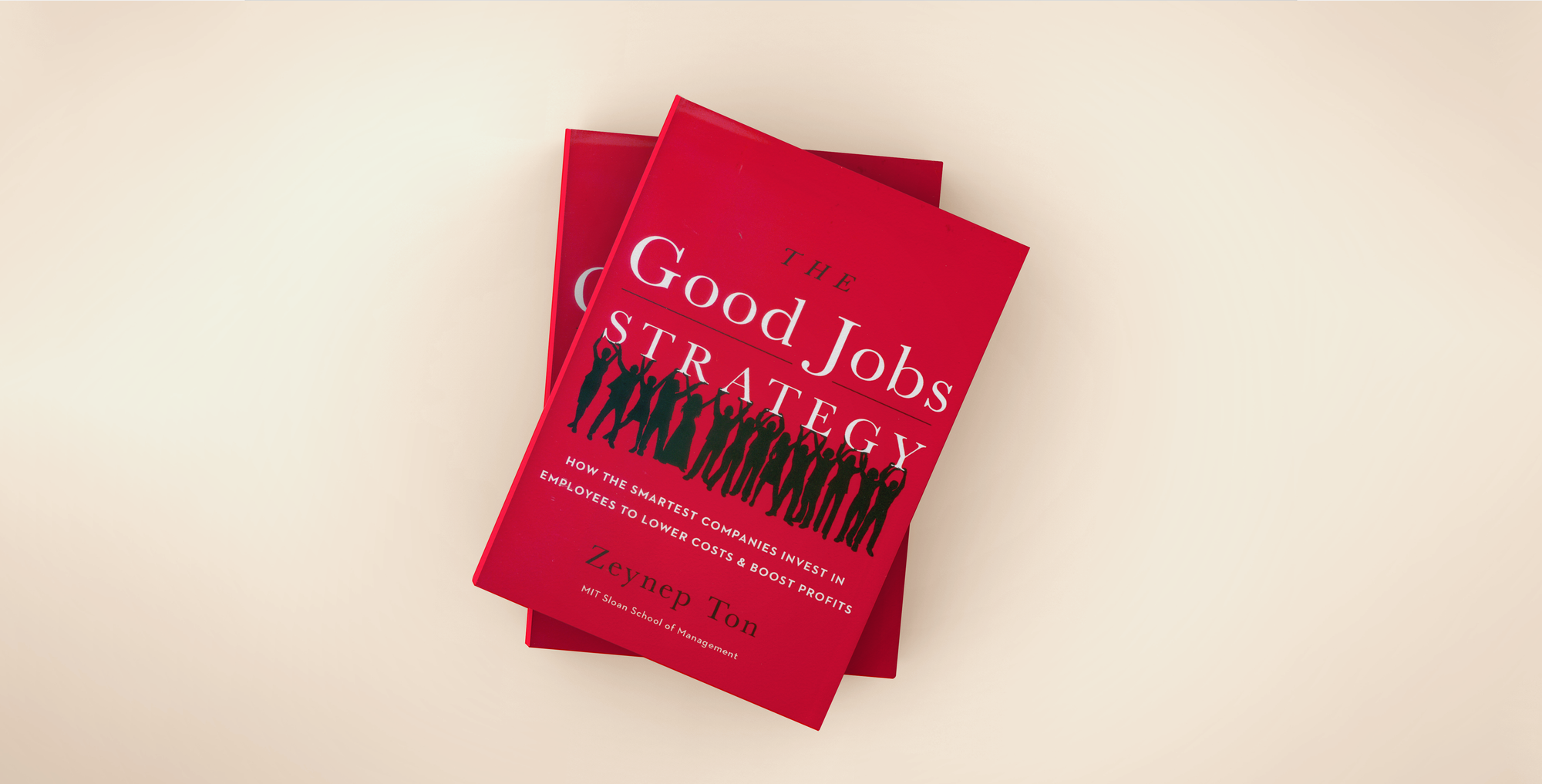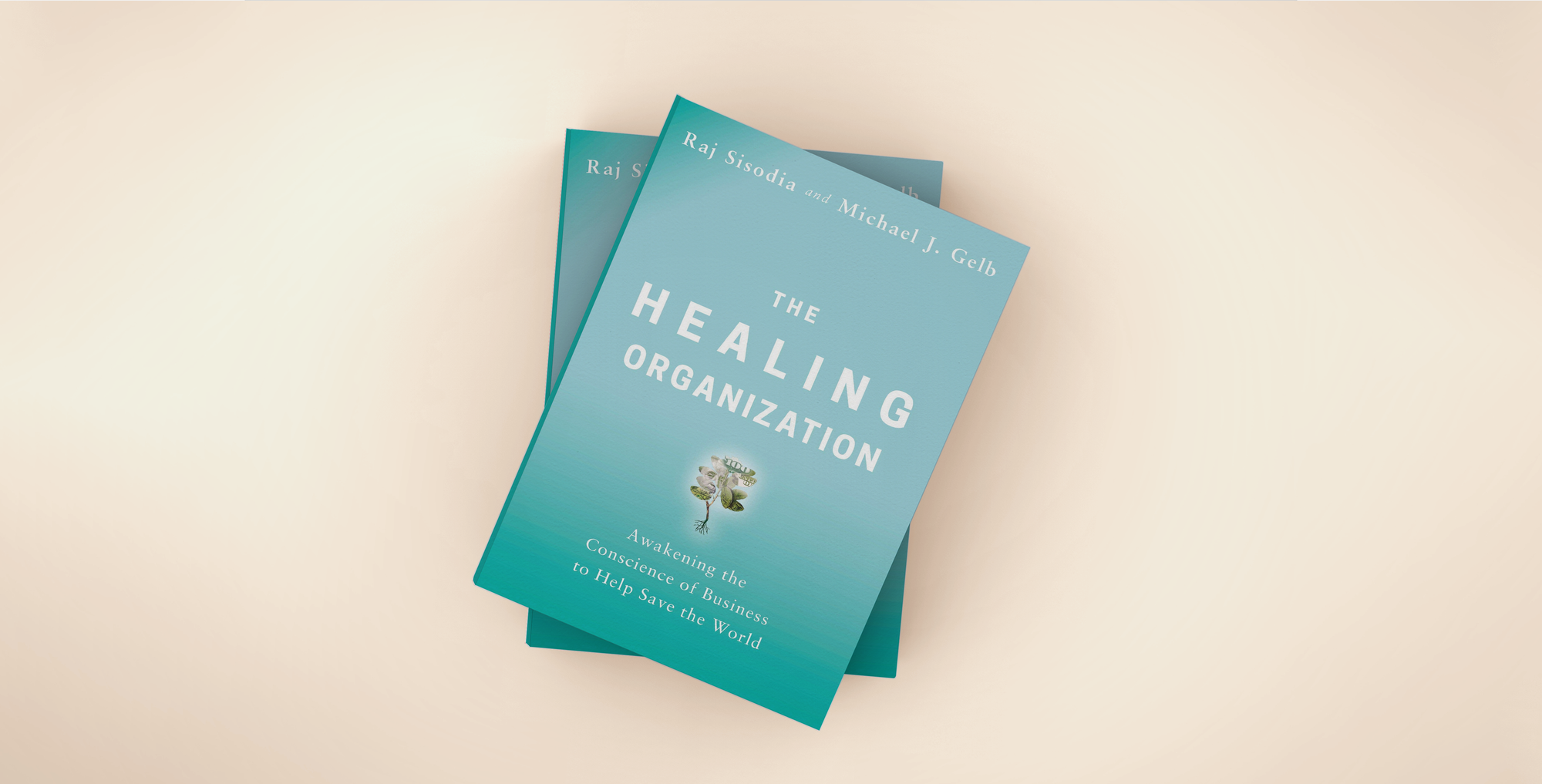It is my privilege to have an exclusive interview with Raj Sisodia, co-founder and chairman emeritus of Conscious Capitalism, Inc. and chairman of the Conscious Enterprise Center at Tecnologico de Monterrey.
On behalf of Regius Magazine, I would like to express my gratitude to Raj Sisodia for taking the time in responding our questions and Francisco Fernandez, Director of the Conscious Enterprise Center at Tecnologico de Monterrey for his support in making this interview possible.
This is the second part of a two-round interview process.
PEDRO DAVID MARTÍNEZ: What are the key factors to create a durable and last-ing organization that nurtures a conscious culture with a high-performance team?
RAJ SISODIA:
To create such an organization, the leader must set the tone at the top. That means co-creating an inspiring vision and continually holding the leadership team accountable for the realization of that vision. It means being a living, breathing embodiment of the values that define the culture. It means creating a compelling purpose and renewing that as necessary. It requires coaching leaders and demonstrating genuine care in the organization.
"...the leader must set the tone at the top. That means co-creating an inspiring vision and continually holding the leadership team accountable for the realization of that vision. It means being a living, breathing embodiment of the values that define culture”
Microsoft is a good example of this, both in terms of what not to do and what to do. The company has had three CEOs in its 35-year history as a public company. The first was founder Bill Gates, who was CEO from 1986 to 2000. Gates had a clear vision and a strong sense of purpose: a computer on every desk, powered by Microsoft software. He was a shrewd strategic thinker and relentlessly driven. He was brilliant and arrogant, which set the template for the Microsoft culture; most people working there aspired to be just like him. Over the 14 years, Microsoft’s market value climbed to $250 billion, making it the second most valuable company in the world after General Electric.
Gates was succeeded by Steve Ballmer, who served a CEO from 2000 until 2014. By this time, something rare had occurred: the company had essentially realized its purpose. Computers were now commonplace, and most of them were indeed powered by Microsoft software. Lacking a compelling purpose, Ballmer defaulted to a financial purpose: to continue to grow Microsoft revenues and profits. He created a siloed business structure and relentlessly drove each business unit to maximize its financial results. A larger than life, belligerent individual, Ballmer’s personality stamped itself on the company. Microsoft’s strategy failed to keep pace as technology rapidly evolved. Microsoft was largely a non-player in the emerging mobile and cloud computing world. By the time Ballmer left, the company’s market value had risen from $250 billion to $302 billion over 14 years, badly lagging behind the market as a whole.

When Satya Nadella was appointed in 2014, he saw that Microsoft was a “threatened kingdom?’ Employees were tired and frustrated. The company was sick, losing its soul. It was characterized by envy and resentment rather than creativity. Nadella asked himself: “Why does Microsoft exist? Why do I exist in this role?” It certainly was not to oversee the decline and eventual demise of a once dominant company. A deeply human, caring leader, Nadella immediately started the process of transforming Microsoft’s culture. At his first offsite meeting with his leadership team, he shared his own challenges, including his special needs children and other aspects of his childhood and life. This way of being was entirely new to the hyper-masculine, analytical left-brained culture Microsoft was known for. As Nadella put it, “My passion is to put empathy at the center of everything we pursue. My primary job is to curate our culture so that 100,000 inspired minds can better shape our future. My approach is to lead with a sense of purpose and pride in what we do, not envy or combativeness.” Nadella’s leadership philosophy could be summarized in three words: Model, Coach, and Care.
In addition to creating a culture that was rooted in empathy and a growth mindset, Nadella made several bold strategic moves. He invested heavily in cloud computing, mobile and gaming. Microsoft became a leader in artificial intelligence as well as in most ESG categories. Nadella articulated a new purpose for Microsoft: “To empower every person and every organization on the planet to achieve more?’
The results have been nothing short of astounding. Microsoft market value has increased from $300 billion to nearly $2.5 trillion, an increase of over $300 billion a year during Nadella’s tenure. No company in the history of business has achieved this level of financial success. But it has not come at the expense of other dimensions. Microsoft is widely admired for its culture, its commitment to environmental sustainability, as a pioneer when it comes to the future of work, in diversity and inclusion and many other dimensions.
P D M : Do you think Environmental, Social and Governance (ESG) initiatives cover a significant part of being a conscious Institutional Investor, Family Office or Company?
R S :
The rapidly advancing ESG movement does address many aspects of what it means to be a conscious business. It is a necessary but not sufficient condition for being a conscious business. It does not include considerations of corporate purpose, core values, a conscious approach to leadership, in a culture of trust and caring.
P D M : How can institutional investors and family offices allocate capital in a conscious way and at the same time generate above average risk adjusted returns?
R S :
Investors and family offices should first identify their core values and the impact that they seek to have in the world through their investments. Investments are not just about returns; they are about impact as well as legacy. Investing is about giving life to something that otherwise would not exist. It must be thought of as a long-term proposition. There is no such thing as short-term investing; true investing is for the long-term. Anything else is just speculation. Conscious investors should look for companies that rate highly on all the pillars of conscious capitalism. The pillars are synergistic with each other, the whole is greater than the sum of the parts. They should focus on leading indicators of future performance, such as extremely high levels of employee engagement and customer loyalty.
"There is no such thing as short-term investing; true investing is for the long-term. Anything else is just speculation... Conscious investors should look for companies that rate highly on all the pillars of conscious capitalism”
P D M : What kind of behavior, attitude or best practices can family offices and organizations adapt to be purposeful?
R S :
As I wrote above, it starts with identifying and articulating your purpose and your core values. A good way to ensure continued adherence to purpose is to develop what we call “key purpose indicators” and track them over time.
P D M : How to resolve conflict among individuals, families and organizations? How can families and organizations heal? What to do when families and individuals are unable to forgive? What to do when trust is broken? Can trust be re-paired? If so, how?
R S :
The ease or difficulty with which we can resolve conflict depends on the level at which the conflict is occurring. If the conflict is simply over a matter of opinion, interpretation, or judgment, it can usually be resolved through an open conversation with deep listening on all sides. If addressed in a healthy way, conflict becomes an opportunity to elevate and create more value. But if the conflict is over a difference in values, it is much more difficult to resolve, as most values are deeply embedded in the individuals holding them.
"If addressed in a healthy way, conflict becomes an opportunity to elevate and create more value. But if the conflict is over a difference in values, it is much more difficult to resolve, as most values are deeply embedded in the individuals holding them”
Even in situations of a conflict based on values, it is often possible to bridge the gap by recognizing that certain values are not opposed to each other but are polarities that need and reinforce each other. Please see my response to question 12 below.
The question of how families and organizations can heal is a complicated one. It depends on what the family or organization needs to heal from. Every individual, every family and every organization has experienced some degree of trauma in the past.

Most never do anything to heal from that trauma. As a result, they continue to operate in a reactive, usually damaging way when a situation comes up that triggers an unconscious response rooted in fear. As a general principle for dealing with trauma, I say, “Reveal it, feel it and heal it.” As James Baldwin said, “Not everything that is faced can be changed, but nothing can be changed until it is faced?’ There are a variety of modalities that can help families and organizations heal from embedded trauma.
The ability to forgive and to ask for forgiveness is a critical aspect of being a conscious leader and a conscious organization. Apologies must be genuine and heartfelt if they are to result in forgiveness and healing. One of the most effective ways to apologize that I have come across comes from Hawaii. It is called “Ho’oponopono” and consists of four simple heartfelt phrases: “I’m sorry. Please forgive me. Thank you. I love you.” I have personally experienced transformative results when I have apologized in this way.
Near the end of the book Tuesdays With Morrie, author Mitch Albom asks his dying professor Morrie, “What is the one thing you know today that you wish you had known when you were younger that you know today? What would you do differently?” Without hesitating, Morrie replied, “If I could live my life over again, I would forgive everyone for everything.” Holding on to hatred (especially for his own father) had served no purpose other than to embitter Morrie’s life.
But there is a level beyond forgiveness: acceptance. I learned this in a spiritual course. The teacher said, “Forgiving someone implies that you are right and they are wrong, that you are above them. Acceptance simply means that you accept that this person did something for reasons you don’t understand. Countless factors affect our behavior, which we don’t fully understand: our innate nature, our upbringing, the values that were instilled in us, the circumstances surrounding us at the time, and many other things outside our control. People do what they do, and they don’t do what they don’t do. They are on their own journeys learning their own lessons. The best thing to do is to accept it and move on:’
Trust is foundational to any relationship. It starts with trusting yourself; how much self-trust an individual has determines how much risk they’re willing to take in any arena. With relationships, you build trust in the small moments. Trust is broken when confidentiality is broken, and when someone refuses to take personal accountability for their actions. You can only earn back trust through actions, not words. It can be a long, slow process to regain lost trust.
P D M : No matter how impeccable your business leadership record or strong your strategic plan is, its efficacy may be held back by few members of the organization. What can leaders do when culture/politics kills rational behavior, merits and conscious oriented individuals? How to deal with toxic teams and toxic cultures, particularly if it comes from the very top of the company?
R S :
Modeling and sustaining a conscious and caring culture is one of the primary responsibilities of a conscious leader. Leaders should make it clear that errors in judgment or acceptable and forgivable, but toxic behavior is not the leader must hold people accountable for toxic words and actions.
Power and virtue need to go together. Unfortunately, in most traditional organizations, they do not. Multiple academic studies have found that over 20% of C-level executives in companies have psychological profiles that meet most of the criteria for being a sociopath or a psychopath. That is approximately the same percentage that is found in high security prisons, compared to roughly 1% in the general public. This is because traditional business cultures reward “results at all costs: thus enabling sociopathic behavior that completely ignores the impacts on the well-being of the people in the organization.

P D M : What kind of conscious leadership skills are required in an increasingly fragmented and polarized society?
R S :
In addition to the qualities mentioned above under SELFLESS, conscious leaders also need to cultivate the ability to integrate polarities. Polarities are things that appear to be contradictory but are in fact complementary. Instead of choosing one or the other, we need to integrate both so that we can benefit from the upside of each pole while avoiding the downside of each poll. Examples of polarities include profit and purpose; stability and change; centralized and decentralized; masculine and feminine; and freedom and equality.
A useful tool to think about dilemmas is polarity mapping, developed by Dr. Barry Johnson. When faced with a polarity, most people tend to prefer one of the choices. But there is truth and wisdom on both sides of many issues; each side is incomplete without the wisdom and input of the other. Polarity mapping is a powerful tool to come unstuck from our “either-or” thought and behavioral patterns. Most problems are simply polarities that can be worked with and leveraged, by using “AND” rather than “OR,” i.e., including both polar qualities as inter-dependent pairs in coming up with the solution. Indeed, that is the only way to find a lasting, impactful solution in many cases.
P D M : Trade and capital markets have helped economies expand perhaps to the benefit of few. As a result, inequality in the U.S. and around the world is growing. Could you share your insight and perspective on how do you think inequality and poverty can be solved?
R S :
In a world of zero sum thinking and profit maximization, companies sought to minimize all costs and maximize revenues. That meant paying people as little as possible, and designing business models around that. Over the last 40 years, income inequality has risen drastically in many countries, especially the US. Worker pay has been flat over that time, while executive pay has risen over 1000%. If this continues, there will be social upheaval and even revolutions in many countries. We see the signs of this already. Populist movements are rising around the world, and countries like Chile are significantly reversing their commitment to laissez-faire capitalism.
We need to drastically change our thinking from viewing people as costs to be minimized to thinking of them as sources to be amplified. Businesses need to reconfigure their business models around the idea of “good” jobs that pay a living wage (at a minimum), enable growth and development and result in meaning and fulfillment for the employee. As the book the Good Jobs Strategy shows, this need not result in lower profits; in fact, companies that do this well grow faster and are more profitable than their competitors. The advantages of a more engaged workforce that is more innovative and caring while making fewer operational mistakes usually outweigh the additional costs of paying higher wages and providing better benefits, especially when you factor in the savings associated with lower annual employee turnover.

The Good Jobs Strategy
Almost one in four American working adults has a job that pays less than a living wage. Conventional wisdom says that’s how...
Unilever is a great example of a company that several years ago made a commitment to offering a living wage to all its employees worldwide. Unilever has also required that all its suppliers start paying a living wage to their workers by 2030 at the latest, and the company is helping those suppliers learn how they can do that.
In addition to paying a living wage, companies can should help their employees with financial literacy and help extricate them from financial traps that they may have fallen into. Ramon Mendiola Sanchez, CEO of FIFCO, the largest company in Costa Rica, realized that despite paying good wages, approximately 3% of the company’s employees were living in poverty. He created a program that lifted those families out of poverty within three years and helped them establish a more secure financial base.
P D M : In a post-pandemic world, how do you think conscious leaders should responded to inequality, health crisis, pain and injustice?
R S :
There is a great deal of suffering in the world. The way that we have practiced business in the past has contributed to that. When business is done with an attitude of genuine care and service, it becomes a healing act. We human beings are here on this planet to take care of ourselves and serve each other. Business is a way we can do that at scale. But when we view business as a way to use others to achieve our personal goals, it results in suffering.
In addition to extreme inequality caused by poor pay, most work environments create a great deal of stress and suffering for employees. Heart attacks are significantly higher on Mondays, and millions of people around the world die every year due to stress or overwork. It does not have to be this way. I strongly believe that done right, businesses can be a place of healing for those who work there, a source of healing for those it serves and a force for healing in society. I define healing as “reducing suffering, elevating joy and promoting healthy growth.” In my book The Healing Organization, I write about 25 companies that are places of healing for the employees, sources of healing for their customers and forces for healing in society. To become a healing organization, you need have healing leaders. Such leaders open their minds and hearts to the lived experience of the people their company employs and impacts. When we bear witness to the suffering of others, loving action naturally arises. By creating places of healing, business leaders also end up healing themselves, finding great joy and fulfillment in their work.

P D M : Given the current state of geopolitical and global affairs, is democracy, freedom, the rule of law and capitalism at risk? How can the U.S. and China resolve tensions and avoid an escalation of conflict with unintended consequences?
R S :
We are going through a dangerous period in human history. Recall the year 1989. On November 9 of that year, the Berlin Wall was brought down. The wall had been a tangible symbol of the defining debate of the loth century between competing ideologies for how to organize human society: capitalism, democracy and freedom on the one hand versus communism, socialism and government control on the other. That debate had been the basis for the Cold War, which most people believed would end with a nuclear holocaust.
Suddenly, without a gunshot being fired, that debate was over. Democracy and capitalism, which are based on human freedom and dignity, triumphed over communism and socialism. Capitalism and democracy were joined together at that time. However, in the decades since, capitalism and democracy have slowly diverged in many countries. In some countries, there is capitalism but no democracy. In some other countries, capitalism has co-opted the levers of democracy to create a version of crony capitalism. We urgently need to reconnect capitalism and democracy, and ensure that capitalism serves democracy and not the other way around.
The growing conflict between the US and China is the result of justified fear that the Chinese model of state sponsored capitalism without democracy is a dangerous trend that distorts self-correcting market forces. It represents a clash of civilizations as well as a clash of value systems. Unless China evolves towards democracy, this conflict is unlikely to abate in the future.
In the interim, there needs to be constructive engagement on both sides, recognizing our interconnectedness and interdependence. As Martin Luther King Jr said, “All life is interrelated. We are all caught in an inescapable network of mutuality, tied into a single garment of destiny. Whatever affects one directly, affects all indirectly.” We need to shed the zero-sum world-view that the US and China can only advance at each of their expense. Despite its obvious flaws, China has succeeded in lifting hundreds of millions of people out of poverty. It needs to be encouraged to move towards creating the conditions for greater freedom and self-determination for its people. Of course, I recognize that is easier said than done.
P D M : Can consciousness thrive and individuals become conscious leaders in countries that lack freedom, human rights, rule of law and have a corrupt and dysfunctional legal system?
R S :
Systems breed certain kinds of behaviors, and those behaviors cannot be changed until the system is altered. Islands of consciousness can exist within seas of despair, but they cannot thrive or grow. In corrupt countries that lack freedom, human rights and the rule of law, true capitalism cannot exist, let alone Conscious Capitalism. In such environments, human beings descend to lower levels of consciousness, rooted in survival and domination.

The Healing Organization
The image of modern corporations has been shaped by a profits over people approach, but we are at a point where business...
P D M : Any words of wisdom to the skeptics of the conscious capitalism movement?
R S :
My question to skeptics is “What are you afraid of?” It is said that a cynic is a disappointed idealist. Most of those who are skeptical of the Conscious Capitalism movement operate from fear and a scarcity mindset. After all, classical economics is rooted in the idea of scarcity. Conscious Capitalism is rooted in the idea of love and abundance. Traditional economics and capitalism assume that human beings operate only based upon their self-interest. Conscious Capitalism recognizes that we are also motivated by a need to care and a drive towards purpose. This is what it really means to be a human being. That understanding greatly enriches the institution of business. It is a way of being in business where everybody matters and everybody wins in the long run.
P D M : What is the vision and goals of the Conscious Enterprise Center at Tecnologico de Monterrey? Can Monterrey and Mexico at large become a global hub of consciousness and healing?
R S :
Our vision is that the Conscious Enterprise Center will become the leading center worldwide for research, teaching, executive education, case development, benchmarking and consulting. Our initial focus will be on Mexico, but we aspire to reach beyond Mexico to include all of Latin America and other parts of the world as well. Our location within Tecnologico de Monterrey and the city of Monterrey give us a unique advantage. Tecnologico de Monterrey has a massive national presence, a growing global reputation, a powerful board of trustees and an extensive alumni network. Monterrey is a city with a unique heritage of enlightened business practices. We will build upon these strengths to create a uniquely valuable and impactful center.
"Our vision is that the Conscious Enterprise Center will become the leading center worldwide for research, teaching, executive education, case development, benchmarking and consulting. Our initial focus will be in Mexico, but we aspire to reach beyond...”
P D M : What are the key MegaTrends that you foresee in the next decade?
R S :
Our planet has existed for 4½ billion years, but we have destroyed much of its life-giving capacity in just a couple of hundred years. The Earth can sustain a stunning diversity of life forever, but the ignorant and mindless way in which we have lived and led means that people alive today can vividly foresee the devastation of human society and extinguishing of countless other life forms in their lifetimes.
But this future is far from inevitable. We have agency. We can influence and alter the trajectory of life on our planet. The levers are in our hands. If we exercise them with care and consciousness, we can set human society and the planet back on a life-sustaining path. It starts with a fresh approach to business.
Most businesses act as though the future doesn’t exist or does not matter. This is unconscionable, selfish, myopic and suicidal. Every business should consider the future as its biggest stakeholder. We must reject any action that does not contribute to the creation of a vibrant future for life on the planet and the life of the planet.
P D M : Please feel to share any final thoughts, insights or re-marks with our audience.
R S :
The profit maximizing approach to business gave us dramatic gains in per capita incomes, extraordinary technological advances, and significant increases in longevity. But the relentless and single-minded pursuit of profits and efficiency also resulted in the dehumanization of work. We treated people as costs to be minimized and resources to be exploited. That mindset was directly responsible for the rise of militant unions, followed by Marxism, socialism, and communism. Those social movements and ideologies arose as responses to the abuses that were sanctioned and justified under the old theory of business. It divided the world and created unfathomable amounts of suffering.
The environmental and planetary consequences have been even worse. We treated this finite and fragile planet as an infinite source and a limitless sink, resulting in devastated ecosystems, deforested landscapes, polluted air and water, overfished oceans, and the elimination of countless species. We instituted systems of unconscionable cruelty in factory farming systems in pursuit of efficiency and profits.
We are individually and collectively responsible for all the suffering we have wrought in the pursuit of profits. It is time to change course, to heal and elevate to a better way of doing business.

We do not need to choose between profits and people, or between success and suffering. Adopting a new human and planetary-centered approach to business gives us access to the upsides of capitalism to an even greater extent than before, with none of the downsides. Practiced along these lines, business becomes noble, heroic, and beautiful. The authors of The Purposeful Company expressed it well: “Great firms are precious economic and social organizations. They are the originators of wealth generation, offering solutions to human dilemmas and wants at scale, and are thus agents of human betterment. They are enabled by the pursuit of clearly defined visionary corporate purposes, which set out how the company will better peoples’ lives. Those purposes are binding commitments on the whole enterprise that generate trust and enable increasingly sophisticated forms of value creation.”
As William Gibson said, “The future is already here — it’s just not very evenly distributed:’ Many companies already function with this mindset today. We need to recognize, celebrate, and learn from these companies. Leaders of existing businesses need to upgrade their obsolete operating systems. Entrepreneurs need to embed this new mindset in their businesses from the outset. We need to teach the millions of students who graduate from business schools around the world every year that this is how we need to do business in the future.
If we do not do this, we will have failed at the greatest responsibility ever borne by humans. Future generations will forever remember those now in positions of power and influence as the callous, myopic, and complacent overseers of a disintegrating system.
It is time for us to wake up from our collective trance. We are stewards who need to finally awaken to our stewardship. It is time to remember who we are: the apex species on this planet whose sacred duty it is to steward the planet with wisdom and foresight for the continued flourishing of life. That requires us to elevate to a new understanding of what business is really about.

Raj Sisodia
FEMSA Distinguished University Professor, Conscious Enterprise.
rajsisodia.com




